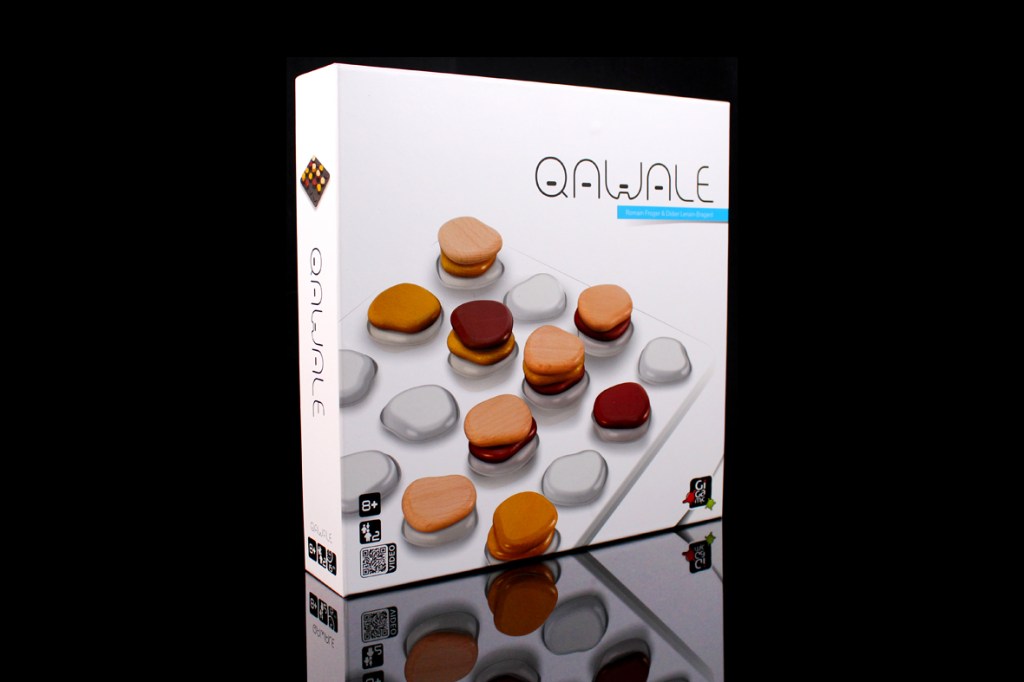
Base price: $38.
2 players.
Play time: ~15 minutes.
BGG | Board Game Atlas
Buy on Amazon (via What’s Eric Playing?)
Logged plays: 4
Full disclosure: A review copy of Qawale was provided by Hachette Boardgames / Gigamic.
We’re back on the abstract train! I was kind of hoping to get this out closer to Valentine’s Day, since it’s a two-player abstract and that seems ideal for Valentine’s Day. Instead I did a bunch of games about mysteries and conspiracies. I’m not sure what that implies about my love life, but I’m going to add that to the “Questions for My Therapist” folder regardless. That’ll be fun. In the meantime, however, we’re heading back to Gigamic’s line of abstract games. I’ve covered some in the past (Pylos, Quarto, Quorridor), so I’m excited to see how this new one stacks up! Let’s dive in.
In Qawale, players are stacking stones with the hopes of getting four in a row. However, you can’t just place stones places; that would be silly. Instead, every turn you’ll add a stone to a stack and then dispense the stones from the bottom up. Doing that’s the only way to get your four-in-a-row, but your opponent can do the same thing! It’s a tight game with only sixteen spaces on the board, so you’ll have to get clever if you want to win before you both run out of pebbles. Can you line it up?
Contents
Setup
Essentially none! Just place the board in the middle of the table:
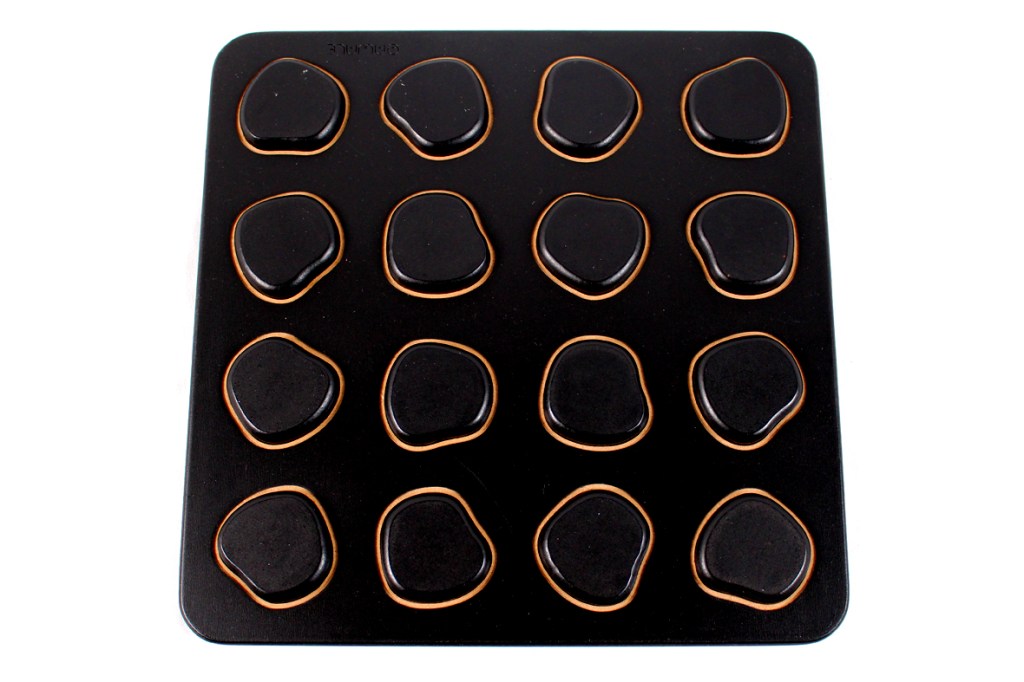
Then make four stacks of two pebbles each of the tan pebbles, one stack in each corner. Give one player a set of the lighter pebbles, and one player a set of the darker ones.
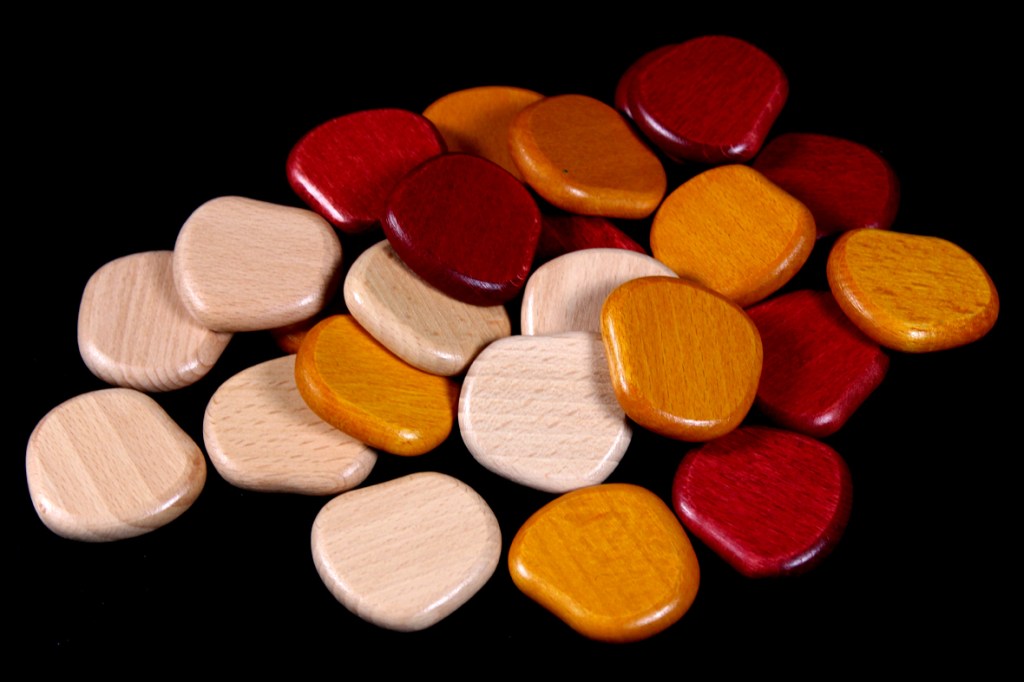
You’re ready to start!
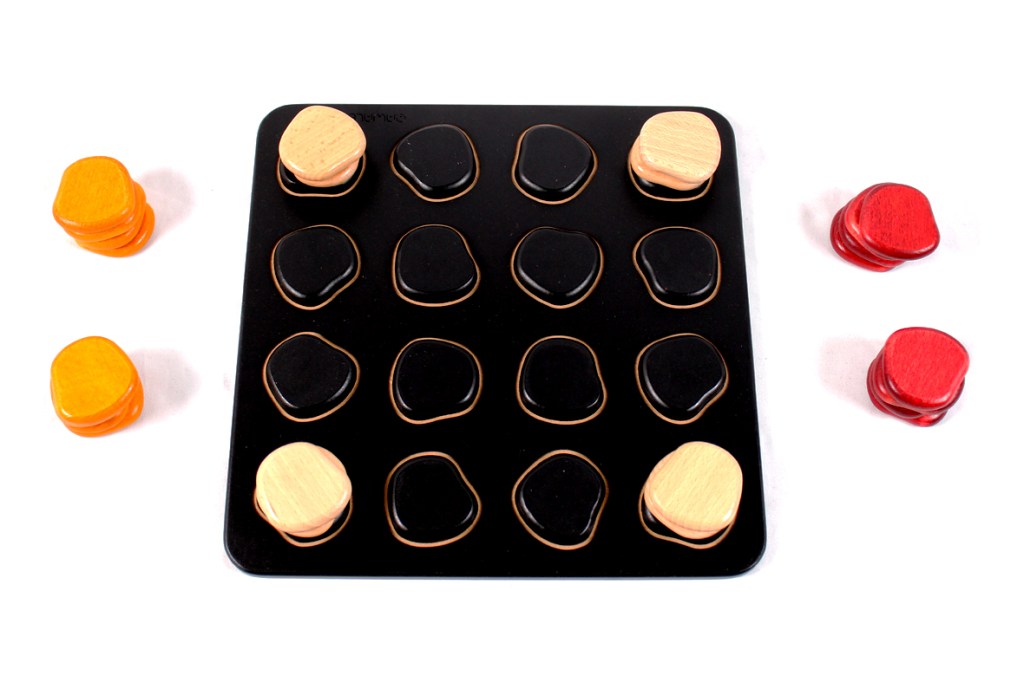
Gameplay
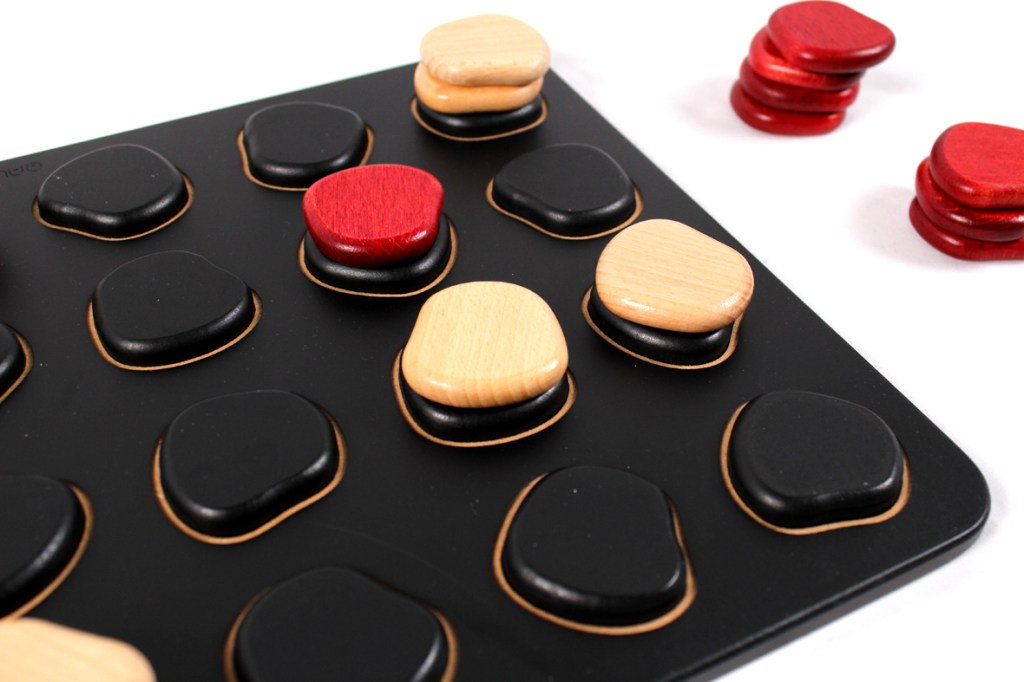
This one’s pretty simple. On your turn, place one of your pebbles on top of any existing stack of pebbles. Then, lift the entire stack and play them, one at a time, on subsequent orthogonally-adjacent spaces. It’s very mancala-esque. You cannot suddenly reverse direction, but you can circle around to a space you’ve previously played on.
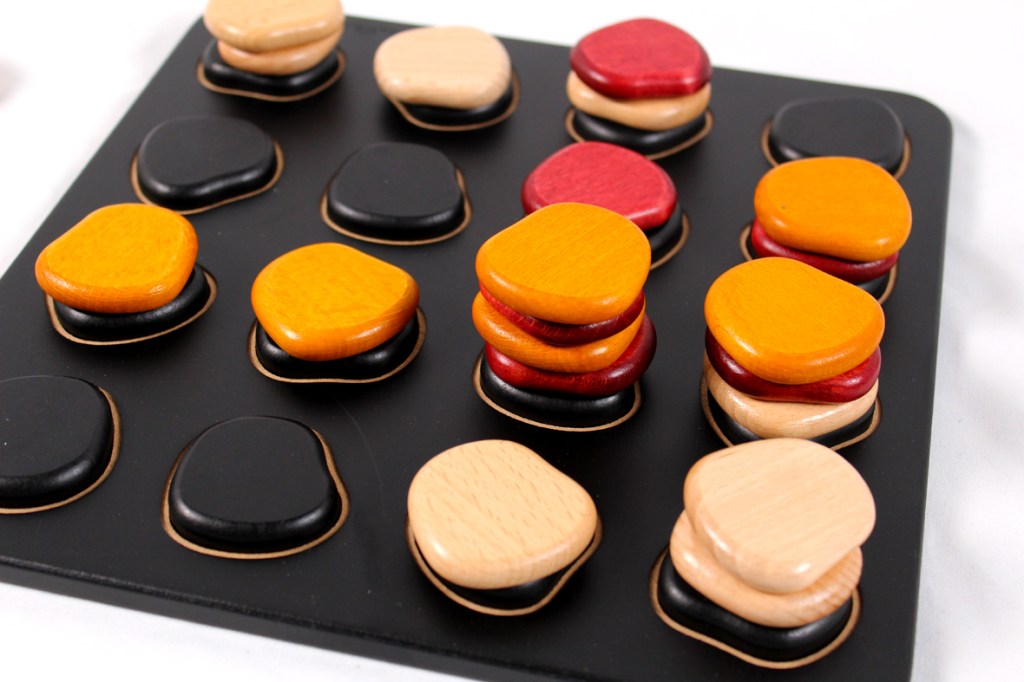
If you manage to get a line of four pebbles of your color vertically, horizontally, or diagonally, you win! Pretty straightforward.
Player Count Differences

None! This one’s exclusively a two-player game.
Strategy
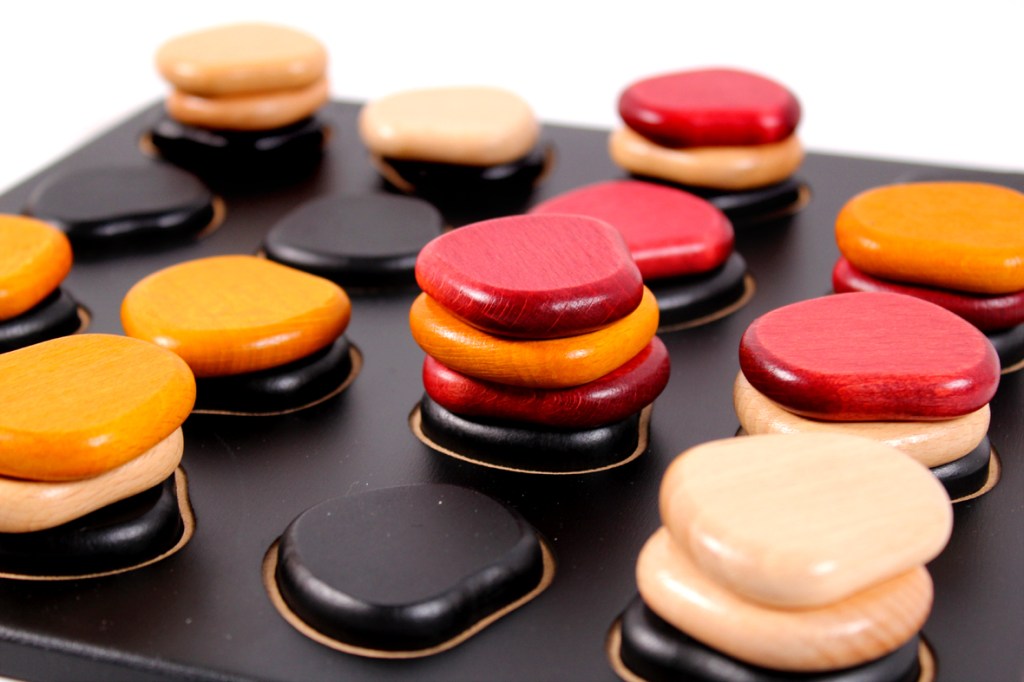
- A particularly sneaky move is getting four of your pebbles stacked on top of each other. That can be an instant win in some circumstances. This is, of course, provided you can get them placed in the right spot so that you can just drop a clean line vertically or horizontally on your turn. That’s hard to do, especially because it’s pretty easy to notice that you’re doing that. You can pretty easily put a stop to an opponent’s three-pebble stack and just leave them in a junked spot in the middle of the board if they start trying that noise.
- Keep an eye on what your opponent could do next turn; that may be the spot you need to mess up. Planning ahead is generally good for abstract games, but you also need to think about where your opponent can move so that they’re set up to win. Blocking those spots, preventing their pebbles from being mostly-in-a-line; all good choices,.
- Generally there will be a bunch of pebbles of different types in a stack; you should have an ordering of how you place them planned out. Again, come in with a plan and execute on that. Don’t just place them essentially at random; you might be setting your opponent up for a win if you’re not paying attention to the state that you leave the board in.
- You can loop back on a previous spot if you have a stack of at least five pebbles; you can use that to waste a lot of your opponent’s pebbles. I particularly like doing that as a way to put something on top of an opponent’s pebble so that they can’t use it as easily or effectively on their next turn. It’s quick, it’s fluid, it’s needlessly mean. I love it.
- Remember that you can’t place on an empty location. There’s a real temptation to do that so that you can complete a line, but you can also use this to your advantage. You can’t place on an empty spot, but neither can your opponent! Just don’t rely on that too heavily; after all, it’s very easy to fill a spot with a single pebble if you know what you’re doing.
Pros, Mehs, and Cons
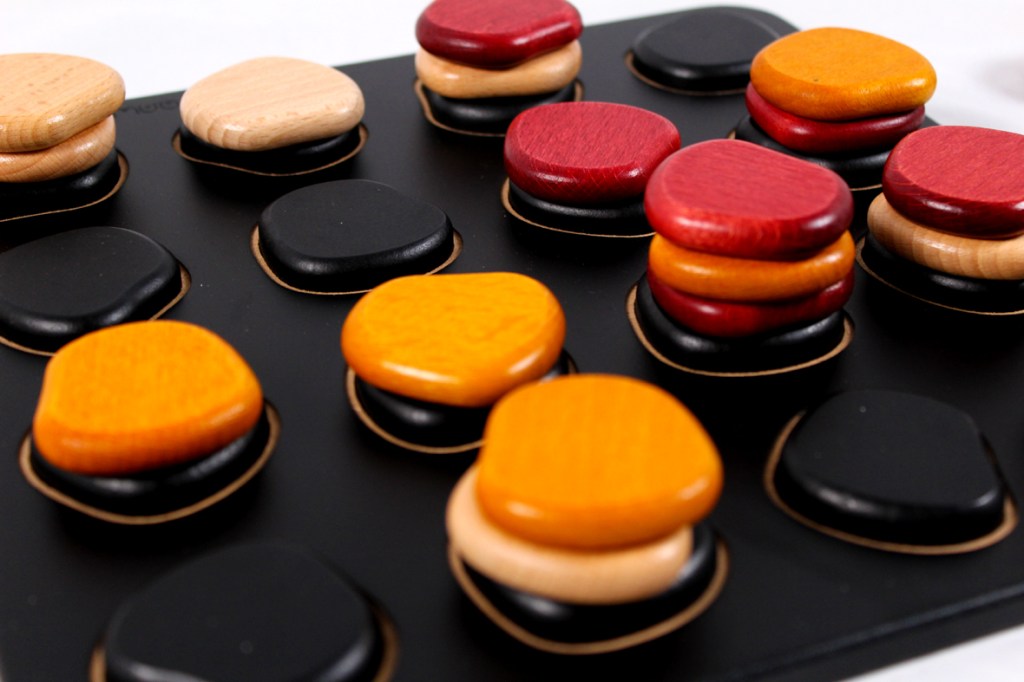
Pros
- Another extremely well-made game from Gigamic; their abstracts line is unparalleled. They’re just so classy! The pieces are a really nice wood, the board has a good weight to it, the whole thing. I really love the Gigamic line because they just look really nice, as games, and I’m excited to have another one for the collection. Target ran a Bookshelf Games promotion a while back where they sold like, wood-box copies of Monopoly and Scrabble and some other games that look really fancy, and that’s kind of what I like about them. They make me feel like a classy person.
- I particularly like how easy this one is to teach and play! You really just add to a stack and then distribute it, and that’s the whole game. The minimal rules overhead really lets the strategy shine, which I like a lot.
- The mancala-esque strategy of it is very good. It’s very satisfying to plan out how you want to distribute a pile of pebbles so that you can go after the coveted four-in-a-row. It’s also not a particularly complex endgame (four-in-a-row is fairly intuitive), so you really can play this with a wide variety of folks. A great way to teach good abstract gaming concepts like planning ahead and assessment of your opponents’ available moves.
- It’s a bit funny how folks I know call this “the hamburger game” or “the macaron game” since pebbles aren’t the first thing that the tokens make players think of. I have heard both hamburgers and macarons; I’m ambivalent, but I’d love to know what you think this game looks like. Either way, it makes me laugh, so that’s fine.
- It’s also a very easy game to pick up and replay. You just clear the board, reset the starting pebbles, and you’re good to go. I love these quick-to-replay abstracts; they’re excellent.
Mehs
- This one’s a bit of an odd duck among the Gigamic abstracts; it seems like it’s trying to have a theme, but it only asymptotically approaches one? I’m not sure what it’s supposed to be beyond “rock stacking”. The other ones don’t really have themes, but there are all kinds of pictures of rock stacking on the back of the rulebook, so it seems like they’re toying with the idea of having a theme? Not really sure. It’s not the strongest theme I’ve seen in a game, so I’d honestly recommend going one way or the other with that.
Cons
- You may want to store the board upside down! My box got a bit dented from the board’s default pebble spaces. They’re built-in, which was fun and unexpected, but this always leads to some mild shaking and such when you transport the box and all that. As a result, slight dent on the front of the box. I started storing the board upside down so that if denting happened, it would happen to the insert, and that’s been a lot safer.
Overall: 8.5 / 10
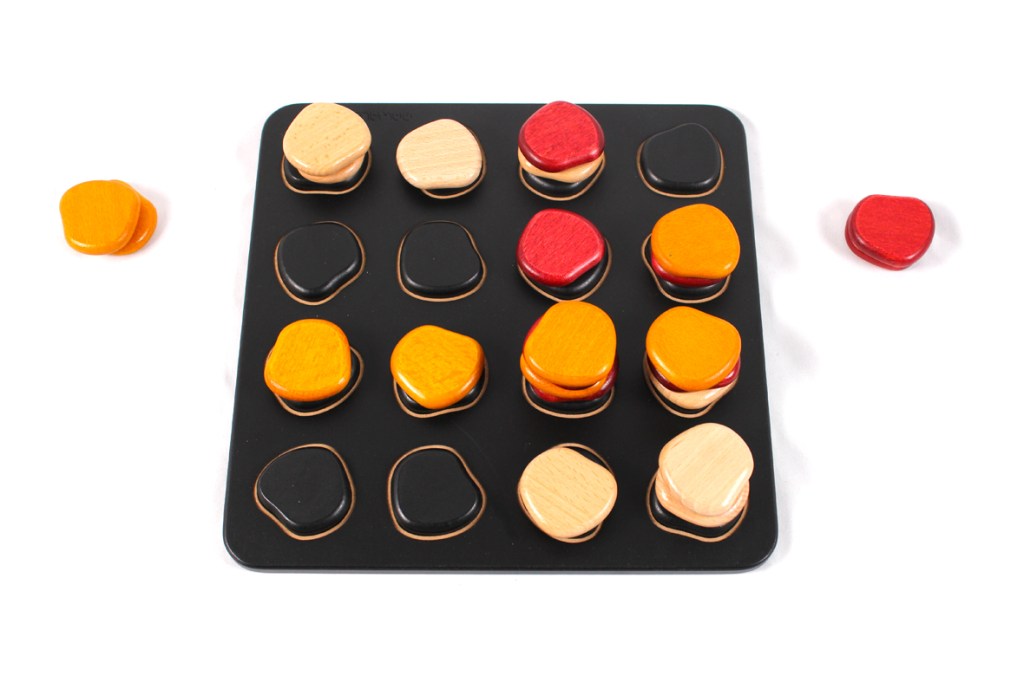
Overall, I think Qawale might be my favorite of the two-player Gigamic abstracts! It’s either that or Quarto, anyways. I appreciate, as a series, how easy they all are to pick up and play, but Qawale is one of the fastest yet. I think that despite not having played mancala, I find the mancala-esque abstract play of Qawale very intuitive. You just pick up a stack and distribute it, trying to get four of your color in a row somewhere on the board. It, like Quarto, leverages that basically everyone understands how a four-in-a-row game works, and Qawale adds an interesting spin (and a distinctly different spin than Quarto) to make a compelling game experience. Of course, it helps that Gigamic always pulls out all the stops with their abstracts; this is a game that looks elegant, like it’s always existed in someone’s fancy den next to some leather-bound books, and it plays quickly enough that you can pick it up, play, lose, play, win, play, and win again (maybe). I love those kinds of games, so seeing more of them is always gratifying. It would be somewhat nice if the game had a slightly better way of storing the board, since it’s a unique shape (and kind of bounced around in transit), but I imagine that the insert is fairly standardized, at this point. I don’t really get the theme of the game, either, but that thankfully doesn’t distract from an otherwise solid abstract game. If you’re a fan of abstracts, looking for another great two-player game, or you just enjoy spins on the classic four-in-a-row type of game, I’d recommend Qawale! I’ve really enjoyed playing it.
If you enjoyed this review and would like to support What’s Eric Playing? in the future, please check out my Patreon. Thanks for reading!